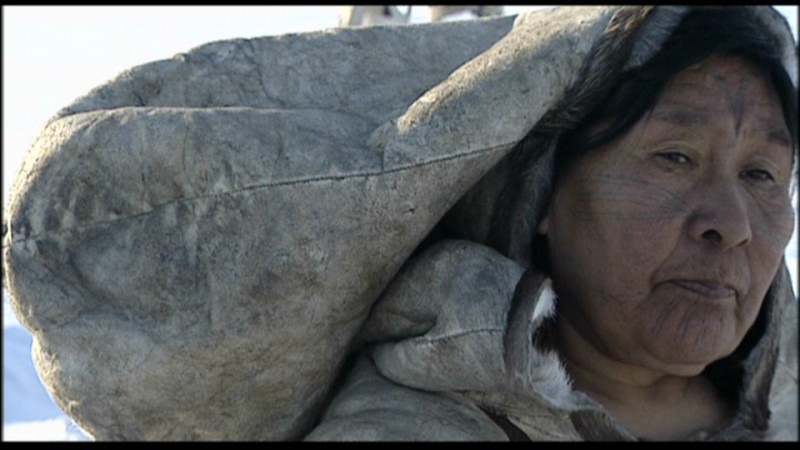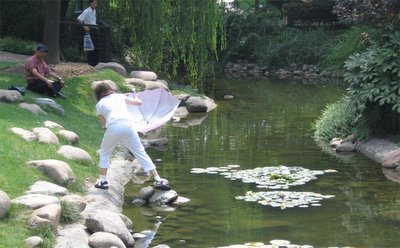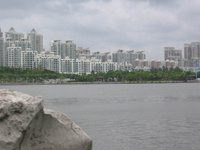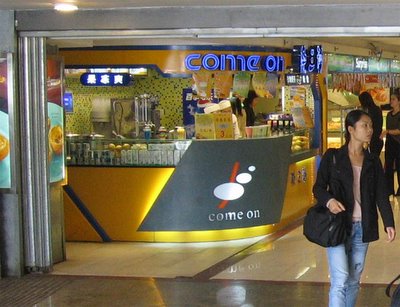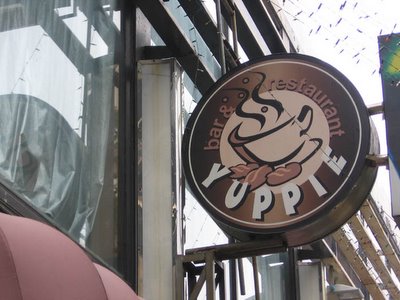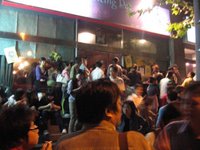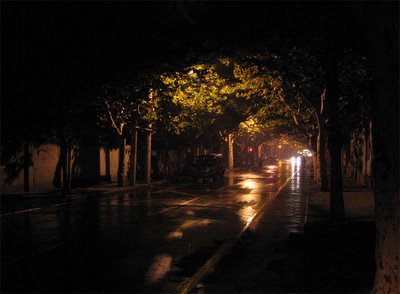 This update is about a subject very dear to the heart of Shanghai: Cell Phones. Just as iPods are the conspicuous consumption of choice in the Bay Area, cell phones in Shanghai are for showing off. And I can't help but admit, I've bought into the frenzy. I'm embarassed of my Motorola V188, and wish I was one of the cool kids with an Ericsson Walkman model!
This update is about a subject very dear to the heart of Shanghai: Cell Phones. Just as iPods are the conspicuous consumption of choice in the Bay Area, cell phones in Shanghai are for showing off. And I can't help but admit, I've bought into the frenzy. I'm embarassed of my Motorola V188, and wish I was one of the cool kids with an Ericsson Walkman model!Plan-less cell phones, and other electronics for that matter, are surprisingly expensive in Shanghai - there's a big markup from what they cost in the United States, even though everything's manufactured in China. My phone was on the cheaper end, still costing about $90, whereas the cool-kid Ericsson model costs $400. With the much lower wages and cost of living most people have in China, this price is totally obscene. Perhaps to show it off, people seem to prominently display them on their subway rides.
To be fair, the cell phones are also watches, just like in the US. Also, sending SMS messages is extremely popular over here, even though it can be difficult to do with the Chinese language. First you choose the english reading of the character with your keypad, and then you scroll through the list to choose the correct character. Just one character can be a very large amount of button presses.
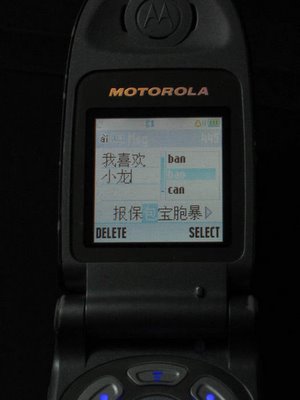
Getting a cell phone in the first place was a little difficult for me. The cell phone system here won't work with US cell phones, you need a new one. So you either buy a cell phone with a plan, as in the US, or you buy a cell phone without any plan, then buy a chip that gives it a phone number for another $20 or so. What's cool about that is I didn't even need to write down my name or show ID to get this phone - the policy has since changed, though, to cut down on SMS-spammers and other criminal activities.
 If you don't have a plan, you have to buy cards that allow you to charge up the account of the phone, in multiples of 100 RMB (about $12.50). One minute of a local call is 8 cents, one SMS is 1 cent. I bought this card on the left, it has Yao Ming's picture on it, he was a local basketball star before getting big in the NBA. These cards have scratch-off systems like you're playing the lottery. Instead of winning a prize you get a series of numbers, which you enter after calling a special number.
If you don't have a plan, you have to buy cards that allow you to charge up the account of the phone, in multiples of 100 RMB (about $12.50). One minute of a local call is 8 cents, one SMS is 1 cent. I bought this card on the left, it has Yao Ming's picture on it, he was a local basketball star before getting big in the NBA. These cards have scratch-off systems like you're playing the lottery. Instead of winning a prize you get a series of numbers, which you enter after calling a special number.
 The price for long distance to the US over these is $1/minute! So instead I buy special long distance cards, each can call the US for 40 minutes. The trick is, even though they're also marked at 100 RMB, the price is negotiable. I buy them off the street for $5, although now my roommate can hook me up with the cards for $3.50, he knows somebody. Skype is still five times cheaper, but the quality isn't so great with outgoing calls.
The price for long distance to the US over these is $1/minute! So instead I buy special long distance cards, each can call the US for 40 minutes. The trick is, even though they're also marked at 100 RMB, the price is negotiable. I buy them off the street for $5, although now my roommate can hook me up with the cards for $3.50, he knows somebody. Skype is still five times cheaper, but the quality isn't so great with outgoing calls. Shanghai is supposedly the biggest cell phone market in Asia, and it shows. There's advertisements everywhere, and everything from the largest department stores to small side-street shops will sell phones, chips, or the various charge cards you use to activate them.
Shanghai is supposedly the biggest cell phone market in Asia, and it shows. There's advertisements everywhere, and everything from the largest department stores to small side-street shops will sell phones, chips, or the various charge cards you use to activate them. 
